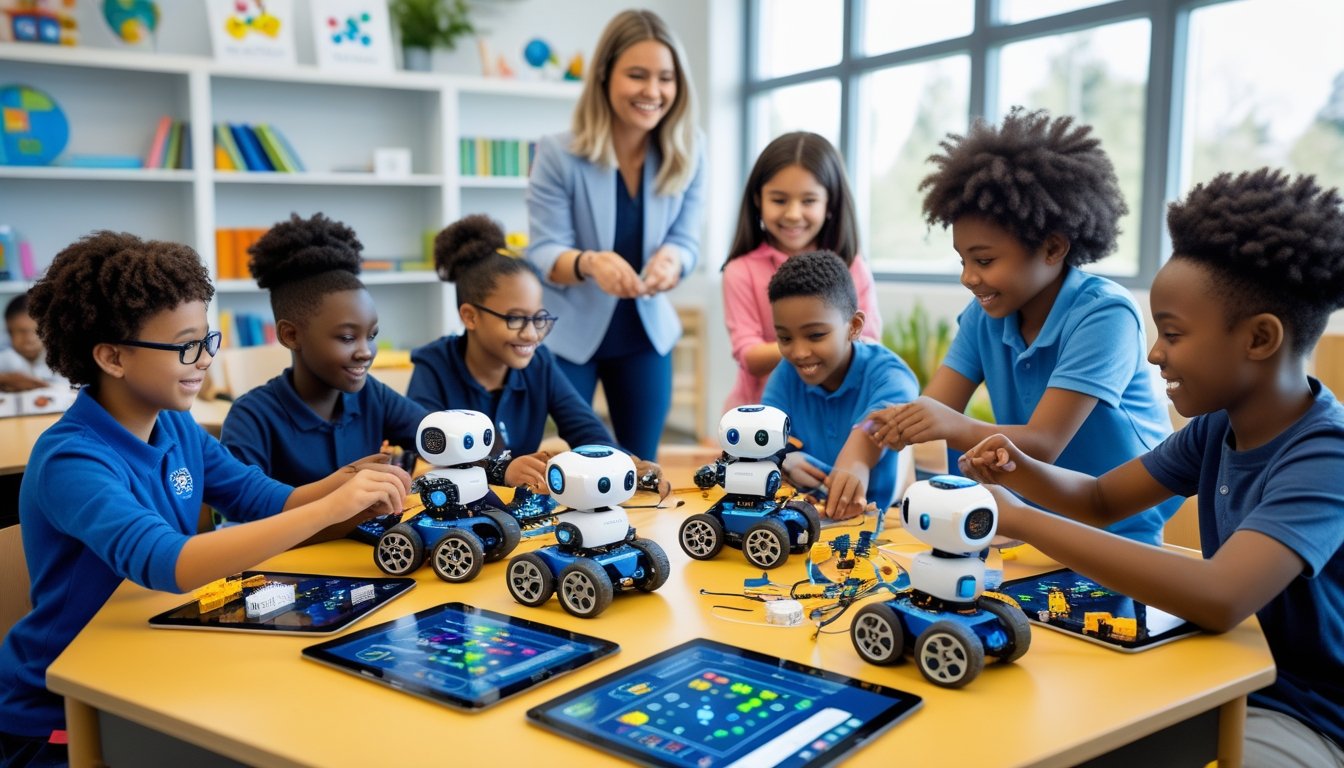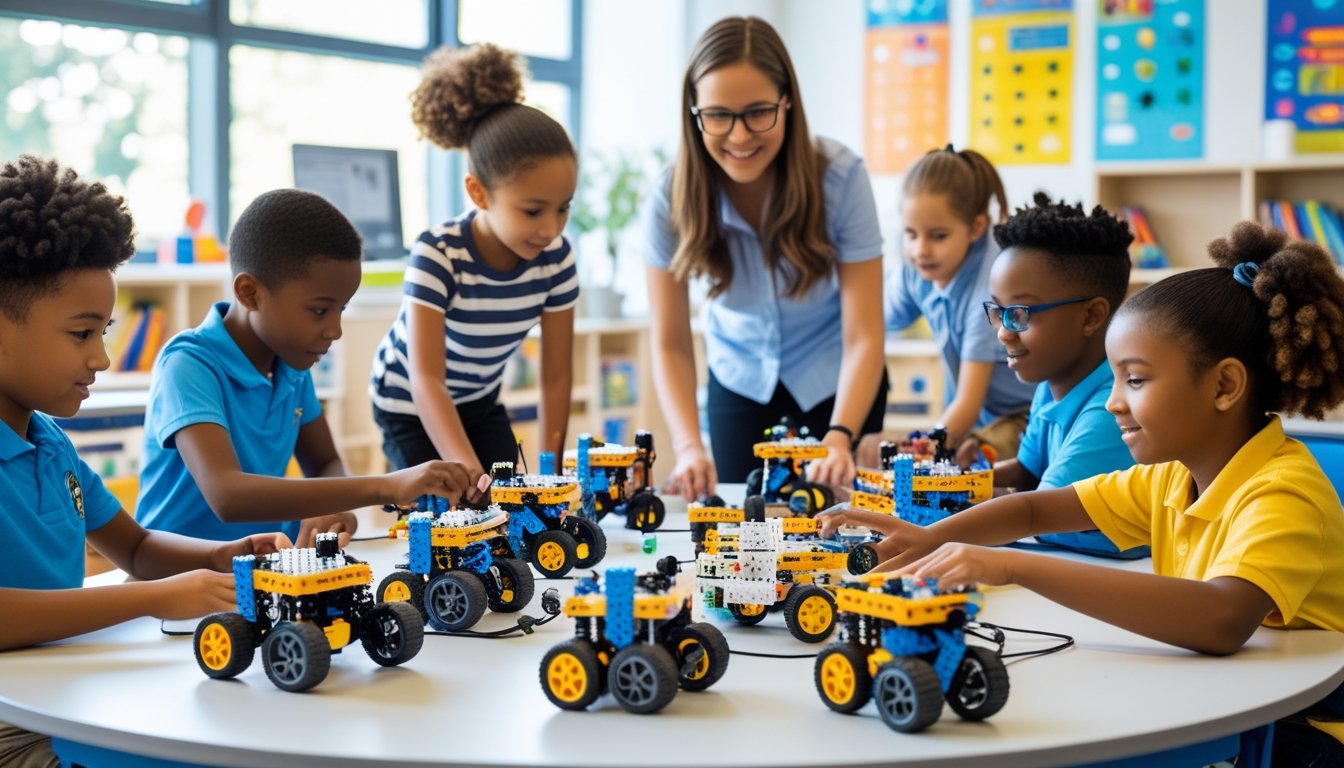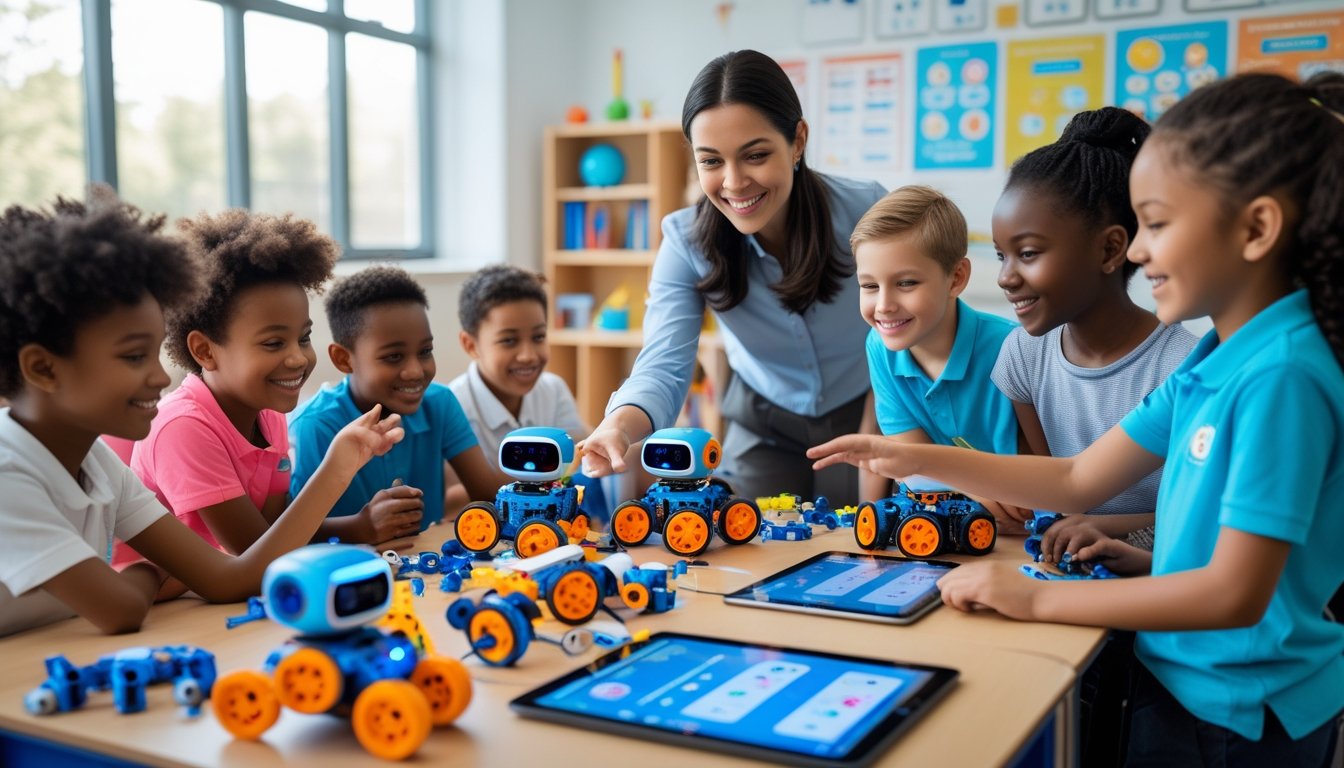Late updated: 13 Oct 2025 09:10
Written by:
The Benefits Of Robotics In Children's Education: Enhancing Learning Experiences
Robotics is a transformative tool in modern education, capturing the imagination of children and providing them with essential skills for the future. From a young age, children are naturally curious about the world around them, and robotics offers a tangible means to explore this curiosity. By engaging with robotics, children develop vital skills such as problem-solving, creativity, and critical thinking, which are indispensable in today's technologically-driven world.

As we integrate robotics into the educational framework, we not only prepare our children to understand and work with emerging technologies but also help foster a love for science, technology, engineering, and mathematics (STEM). This hands-on approach not only makes learning more interactive but also equips students with a solid foundation in technological literacy. Educational robotics can be tailored to various learning needs, supporting diverse skill sets and enhancing educational experiences.
Robotics provides more than just technical skills; it supports emotional and social development as well. With tools that promote teamwork and communication, children learn to collaborate effectively and negotiate different perspectives. These interactions bolster their emotional intelligence, equipping them with the skills necessary for personal and professional success in a rapidly evolving landscape.
Key Takeaways
- Robotics enhances problem-solving, creativity, and critical thinking.
- It fosters a love for STEM and technological literacy.
- Emotional and social development is supported through collaborative learning.
Key Benefits of Robotics in Children's Education
Robotics provides children with engaging ways to develop essential skills. It encourages children to approach problems analytically, enhances their understanding of technology, and fosters a collaborative and innovative spirit.
Enhancing Problem-Solving and Critical Thinking Skills
Robotics introduces children to complex challenges that require them to think critically and creatively. By working with robots, they learn to break problems into smaller, manageable parts, which sharpens their analytical skills.
Children are often tasked with projects that need trial and error solutions. This experience strengthens their ability to think on their feet and overcome obstacles. They learn the importance of perseverance and adaptability.
Through robotics, children also experience the real-world application of theoretical knowledge. This hands-on learning process is invaluable in provoking curiosity and enhancing critical thinking, which are crucial components of a successful educational journey.
Promoting Computational Thinking and Coding Literacy
When children interact with robots, they are naturally introduced to coding and computational thinking. Often using visual programming languages, like Scratch or Blockly, these experiences demystify coding concepts and make learning interactive and enjoyable.
Children learn how to design algorithms to control their robots, which teaches them how to approach problems systematically. This skill is vital in an increasingly digital world where technology is integral to everyday life.
Coding literacy is not just about writing code; it involves debugging and optimising solutions. As children engage with these tasks, they develop skills that will be useful in any technological or engineering career they choose to pursue.
Encouraging Teamwork and Collaboration
Working with robots in groups allows children to practise effective teamwork. They learn how to communicate ideas, divide tasks, and collaborate towards a shared goal. Each member of the team brings unique perspectives and skills, fostering a sense of community and belonging.
Projects often require children to work in roles that cater to their strengths, thereby promoting confidence and mutual respect. These interactions help children appreciate the value of diverse inputs and the importance of listening and adapting to others' viewpoints.
By learning to coordinate with peers, children also hone their leadership and negotiation skills. Robotics projects become a microcosm of real-world collaborative environments, preparing them for future professional interactions.
Fostering Creativity and Innovation
Robotics is a playground for creativity where children are limited only by their imagination. By allowing children to experiment with design and function, we foster a mindset that is both inventive and inquisitive.
Each robot presents a new opportunity for children to invent and innovate. They can personalise their projects, infuse them with their ideas, and see their concepts brought to life.
This freedom to create encourages innovation, as children are encouraged to push boundaries and explore new possibilities. By engaging in creative problem-solving, they learn that failure is just a step towards discovery, driving them to keep innovating.
Practical Implementation and Real-World Impact

Robotics education offers tangible benefits, providing hands-on experience and early exposure to technology. By aligning with STEM learning and offering opportunities through extracurricular activities, children can gain valuable skills for their future.
Hands-On Learning Experiences
Robotics provides students with invaluable hands-on learning experiences. It involves building, coding, and operating robots, allowing children to apply abstract concepts. Robotics challenges often encourage critical thinking and problem-solving, creating a dynamic learning environment.
The use of robotics tools, like Bee-Bot, allows children to engage interactively with technology. These activities help to reinforce theoretical knowledge with practical applications, making learning more engaging and effective. Robotics projects offer a fun and educational way for students to experiment and learn.
Early Introduction and Age-Appropriate Robotics
Introducing children to robotics at an early age can spark interest in technology. Age-appropriate tools and curricula ensure that concepts are easy to grasp. In early education, platforms like Bee-Bot serve as an excellent introduction to coding and robotics.
These age-appropriate tools foster an early appreciation for technology, laying the foundation for future learning. Young children who explore robotics can develop skills such as logical thinking and creativity. Such skills are essential for their growth in an increasingly tech-driven world.
Connecting Robotics to STEM Learning
Robotics naturally integrates with STEM learning, bridging the gap between theory and practice. It allows students to see real-world applications of science, technology, engineering, and mathematics. Through robotics, learners can explore STEM fields more comprehensively.
Robotics challenges and activities provide practical applications for complex theories. They encourage students to think critically about solving problems using interdisciplinary knowledge. This approach ensures that students don’t just learn concepts but also how to apply them effectively in real life.
Extracurricular Activities and Camps
Extracurricular activities, such as robotics clubs and robotics summer camps, offer extended learning beyond the classroom. These programmes provide children with opportunities to dive deeper into the world of robotics. They can engage in teamwork, hone their skills, and compete in various robotics challenges.
Summer camps are pivotal in fostering a friendly competitive environment. They inspire creativity and passion for robotics, enabling students to learn from each other while developing critical skills. Such experiences can significantly influence their future educational and career aspirations, especially in STEM fields.
Frequently Asked Questions

Through engaging interactions and hands-on experiences, robotics education equips children with essential skills such as problem-solving and teamwork. Additionally, incorporating robotics in classrooms enhances student motivation and offers long-term educational benefits.
How can robotics enhance learning outcomes in primary education?
Robotics introduces young learners to STEM concepts in an interactive way, making subjects like maths and science more relatable. By working on tangible projects, students comprehend theoretical concepts better, resulting in improved learning outcomes.
What skills do children develop through robotic programming?
Children gain a wide array of skills, from coding and computational thinking to designing and engineering. These activities foster logical thinking and boost creativity, preparing them for future academic and career pursuits.
In what ways does robotics encourage problem-solving and critical thinking among students?
Robotics challenges students to build and programme functioning models, requiring them to troubleshoot and refine their creations. This iterative problem-solving process fosters critical thinking, enhancing their capacity to identify and resolve complex challenges.
How does the integration of robotics in schools impact student engagement and motivation?
Robotics engages students by making learning active and purposeful. The tangible nature of robotics projects captivates their interest, encouraging exploration and continuous learning. As they see their creations come to life, their motivation to engage deeply increases.
What are the long-term educational benefits of exposing children to robotics at an early age?
Exposure to robotics from a young age lays a strong foundation in STEM disciplines. It nurtures curiosity and adaptability, enabling children to excel in technologically advanced fields and equipping them with skills relevant to diverse future careers.
How does robotics education promote teamwork and collaboration in classroom settings?
Working on robotics projects often involves collaboration, as students need to share ideas and pool skills to achieve a common goal. This teamwork enhances their communication abilities and teaches them the value of diverse perspectives in problem-solving.
